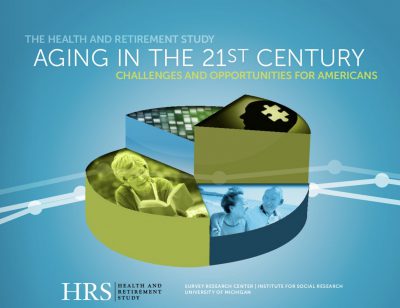Finding
 Bharat Thyagarajan (Minnesota), Jessica Faul, David Weir (Michigan), Eileen Crimmins, Jung Ki Kim (USC) et al use Health and Retirement Study (HRS) to evaluate age-related differences in T cell subsets in a nationally representative sample of people over age 55.
Bharat Thyagarajan (Minnesota), Jessica Faul, David Weir (Michigan), Eileen Crimmins, Jung Ki Kim (USC) et al use Health and Retirement Study (HRS) to evaluate age-related differences in T cell subsets in a nationally representative sample of people over age 55.
Bharat Thyagarajan, Jessica Faul, Sithara Vivek, Jung Ki Kim, Janko Nikolich-Žugich, David Weir, Eileen M Crimmins, Age-related differences in T cell subsets in a nationally representative sample of people over age 55: Findings from the Health and Retirement Study, The Journals of Gerontology: Series A, 2021;, glab300, https://doi.org/10.1093/gerona/glab300
Abstract
Though T cell immunosenescence is a major risk factor for age-related diseases, susceptibility to infections, and responses to vaccines, differences in T cells subset counts and representation by age and sex have not been determined for a large sample representative of the national population of the US. We evaluated the counts of T cell subsets including total, CD4+ and CD8+ T cells, and their naïve (Tn), effector memory (Tem) and effector subsets, in the context of age, sex and exposure to cytomegalovirus (CMV) infection among 8,848 Health and Retirement Study (HRS) participants, a nationally representative study of adults over 55 years. Total T cells (CD3+) and CD4+ cells declined markedly with age; CD8+ T cells declined somewhat less. While CD4+ T cell declines with age occurred for both CMV seropositive and CMV seronegative groups, total T cells and CD8+ cells were both substantially higher among the CMV seropositive group. Numbers of Tn CD4+ and CD8+ cells were strongly and inversely related to age, were better conserved among women, and were independent of CMV seropositivity. By contrast, accumulation of the CD8+ and CD4+ Tem and effector subsets was CMV-associated. This is the first study to provide counts of T cell subsets by age and sex in a national sample of older US adults over the age of 55 years. Understanding T cell changes with age and sex is an important first step in determining strategies to reduce its impact on age-related diseases and susceptibility to infection.
